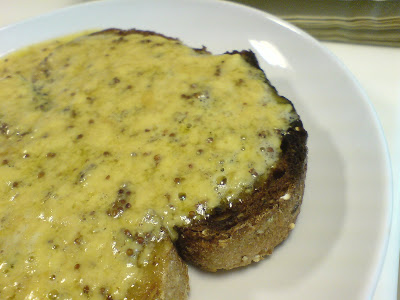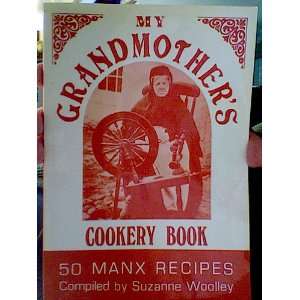Tag: cheese
Chapter 2: Cheese & Egg Dishes – Completed!
#408 Little Cheese Soufflés
This recipe appears to be far too good to be true; there is no béchamel sauce, no whipping of egg whites, no gentle folding and no ban Marie. All one has to do is mix the ingredients in the right order and bake! Obviously this was the one.
This mixture makes enough for 8 ramekins:
Grate 8 ounces of Lancashire cheese, setting a couple of tablespoons aside for later. Whisk together well 4 large eggs, and mix in ¼ pint each of single and double cream along with the cheese. Season with salt and both black and Cayenne peppers. Jane has a secret ingredient too; a rasp or two of freshly grated nutmeg.
Butter your ramekins and split the mixture between them, making sure there is a half-inch gap between mixture and ramekin rim. Mix together the cheese you put aside with two tablespoons of breadcrumbs and adorn each pot with the mixture.
#365 Roast Venison with Norwegian Goat’s Cheese Sauce
#351 Potted Cheese
#326 John Farley’s Fine Cheesecake
My friends Ashley and Jason were throwing a bit of a party last weekend and it was a pot luck party, where everyone brings some food. We don’t have such things in England, but I shall try and introduce them as they are a great idea. I thought it would be a good opportunity to sneak in a couple of historical desserts from the eighteenth century, so I made the delicious sweetmeat cake and this cheesecake.
To make the cheesecake, begin by lining a 9 inch flan tin with puff or shortcrust pastry. Griggers says that in the eighteenth century puff pastry would have been used, so I went with that so the cheesecake would be as authentic as possible.
Now beat the filling ingredients together: 8 ounces of full fat cream cheese, 2 big tablespoons of double cream, a tablespoon of orange flower or rose water, 4 large egg yolks, 2 ounces melted slightly salted butter, 3 ounces of crushed macaroon crumbs, 3 ounces of ground almonds, 3 ounces of caster sugar and up to half a freshly ground nutmeg. Whew!
#270 Mereworth Biscuits

#254 Gloucestershire Cheese and Ale
After a slow few months, it is time to get Neil Cooks Grigson up and running again. I’m settling in here in Texas now, which means I’m getting more than a little homesick. What better way is there to get over it than making some nice English foods?
I was a bit hungover this morning so this recipe I hoped would be the perfect cure: carbs, fat and salt plus the hair of the dog, the perfect combination. The cheese required for this is single or double Gloucester. Good cheeses are hard to find in Houston – typical American cheeses are not the best and anything I considered proper (i.e. European) are pretty expensive and/or difficult to find. However I did find an excellent shop which is set out like a big market called the Epicurean Market. There’s a few of them in Houston and they sell a lot of European foods. So finding places like this is great for my blog.
This recipe is quick and easy and full of delicious calories:
Start by slicing some double or single Gloucester cheese thinly and arrange them in a small ovenproof dish. Spread some good mustard over the top – Griggers suggests Tewksbury wholegrain, but any piquant wholegrain will be good – and then pour over enough ale to just cover the cheese. Bake in a moderate oven until the whole things melts and becomes a sauce. Meanwhile, toast some wholemeal or granary bread, arrange on a plate and then moisten with a little warmed ale. Lastly spoon over the melted cheese and serve with a glass of ale.

#254 Gloucestershire Cheese and Ale. A good traditional cheesy dish very similar to those served in Gentlemen’s Clubs in Edwardian times. Very rich but the mustard and bitter ale helped to cut through the cheese. I was right in that it really helped to sort out my hangover too! 7.5/10
#230 English Rabbit (1747)
‘Toast a slice of bread brown on both sides, they lay it in a place before the fire, pour a glass of red wine over it, and let it soak the wine up; then cut some cheese very thin, and lay it very thick over the bread, and put it in a tin oven before the fire, and it will be toasted and brown’d presently. Serve it away hot.’

I simply made some toast but it in a ovenproof dish, sprinkled some red wine over it, piled on the slivers of cheese and grilled it. I serve it with a wee salad dressed with olive oil and balsamic vinegar.
#230 English Rabbit (1747). This was without doubt the worst Grigson I have done so far. Even worse than the Mallards of Death and the rice cake. I actually thought I was going to be sick. The hot wine and soggy bread was bizarre. Adding salad really was just like polishing a turd, as we say in England. Absolutely disgusting 0/10.
#214 Meat Souffle
A quickie. I knew that we would have plenty of leftover Bradenham ham from Christmas so I knocked this one up. Follow the recipe for the cheese soufflé but use half the amount of cheese and fold about 8 ounces of chopped ham into it. Alternatively, soften a couple of ounces of onions in butter and add 8 ounces of blanched, minced sweetbreads or cooked brains if you like your offal. You might not wish to include cheese though. Make sure you add some herbs too.

#214 Meat Soufflé. The best way to use up some leftover ham, I reckon. The cheese- ham combo is a classic. The salty-sweet ham and cheese and the creamy egg were perfect. If you’ve never made a soufflé before have a go, they are not as scary as people make out. 8.5/10.























